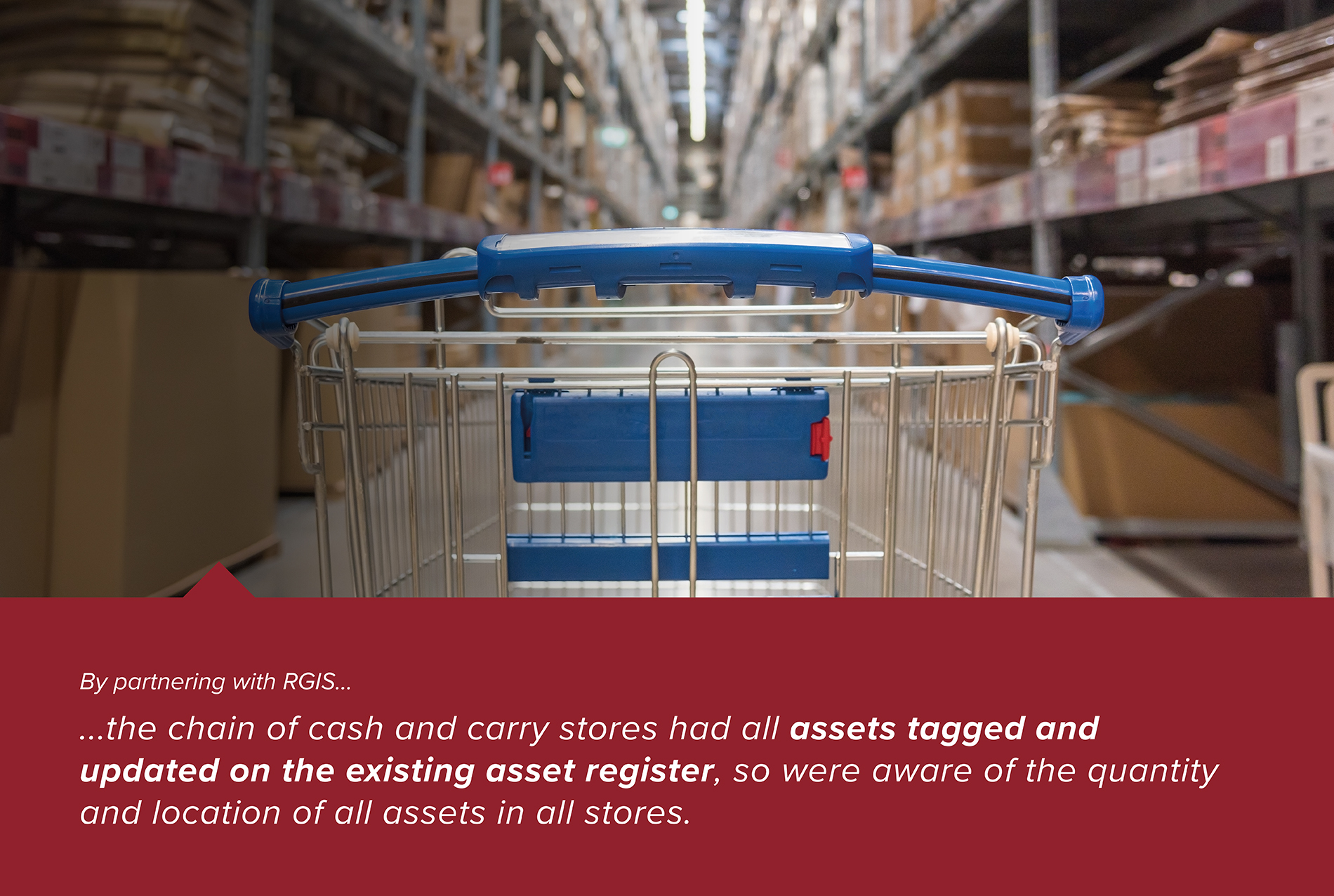Retail Store Chain Fixed Asset Inventory

An international brand of warehouse clubs, also called a cash and carry, required the support of RGIS. The stores sell food and non-food products, usually located in different sections of the store. The food section always includes refrigerated aisles, a wine section and a butchery department. The non-food area includes clothing, DIY, office supplies, electrical items, computing and seasonal goods such as garden furniture.
REQUIREMENTS
The chain of cash and carry stores already utilise RGIS for store inventories, but needed to conduct a fixed asset inventory at an accounting level. So required RGIS to provide the following:
- Count all fixed assets in 21 stores throughout Colombia. Including machinery, equipment facilities, furniture and computer equipment
- Complete the fixed asset inventory efficiently during the months of October, November and December
- Provide an accurate updated asset register
SOLUTION
The chain of cash and carry stores partnered with RGIS to complete the cash and carry fixed asset project, and RGIS provided the following:
- Organised a pilot asset count in the main store. To help identify the process and methodology, how to categorise everything and what data was required
- RGIS scheduled a team of 45 experienced RGIS auditors
- A checklist was created to make sure all the data requirements were captured for each of the assets
- The store’s assets were labelled with barcodes
- After scanning, the RGIS system completed the information about the record, taken from the database
- Any assets without a label were tagged with a new barcode
- Information about the asset was logged including brand, model, serial number, condition of asset, technical description and location of the asset
RESULTS
The chain of cash and carry stores found by outsourcing cash and carry fixed asset project to RGIS, the following results were achieved:
- Teams accurately counted a total of 19,200 units throughout 21 stores
- Variance reports were checked against the register
- Any assets with missing barcodes were added to the register
- Because of accurate data, the customer could easily target the assets counted in the different areas, and sort them to find what was missing, utilising existing assets
- The customer’s existing asset register was updated with the up-to-date information